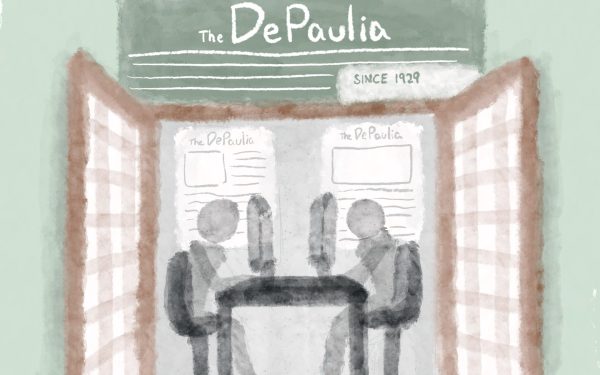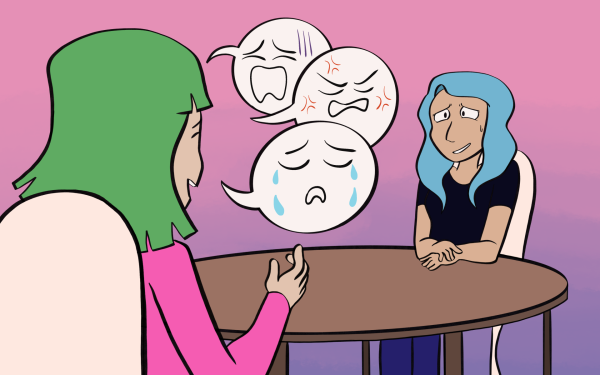Puff puff pass – in class?: How vapes are changing the futures of teenagers
As college students, it might be difficult to imagine high school students unapologetically vaping in classrooms. It’s common for us to see it on campus, as it’s legal and mostly normalized for college students to smoke. Most college students, I would hope, wouldn’t think to disrespect their professors, who very much determine their life’s next steps, by smoking in their classrooms. But in high school classrooms, teenagers can take a puff of their crème brûlée-flavored vape when the teacher has their back turned.
The most prevalent vaping device found in high school classrooms is the Juul, a nicotine-heavy, tobacco-free apparatus that looks dangerously similar to a USB drive. Even though James Monsees and Adam Bowen, the minds behind the device, say it is “an alternative for adult smokers” on their website, students can easily get their hands on them through underage sales at local gas stations and older siblings purchasing them. These Juuls present the fundamental issue with Generation Z: Teenagers are so willing to accept and embody a trend without thinking about how it might affect them later in life.
It’s no question if the Juul is truly as addictive as it seems, since one pod has the same amount of nicotine as a pack of cigarettes. It even helped me stop smoking cigarettes for a while, which is what the FDA hoped e-cigarettes would do for citizens. This presents an issue for regulation, as vape companies do not have to list the ingredients for their products like tobacco companies do; this could be why 51.8 percent of vaping high school seniors think their devices consist of “just flavoring” and no nicotine at all, according to a survey from The National Institute of Health.
There are plenty of reasons why high schoolers have started vaping, but in my view it came down to students desiring to fit in amongst their peers. Once teenagers hear their classmates were receiving an ill-fated buzz from the “USB drives,” the potentiality for a nicotine addiction was thrown out the window and Juuls became commonplace for classrooms.
Additionally, vaping is meme-worthy, and high schoolers love the humor of it all. The image of men in newsboy hats hitting their obnoxiously huge vape rigs and blowing their huge vape clouds that somehow signify the size of their manhood is a classic and weirdly relatable meme. Seeing those huge clouds makes me visibly ill, especially when the vaper is donning that one Red Hot Chili Peppers shirt everyone bought from Target in 2012. Many teenagers participate in vaping because of this humorous, and frankly embarrassing, culture behind it.
“(My sister) vapes for the memes,” said Dirk Molek, 19, a University of Illinois at Urbana-Champaign student and brother of a vaping teenager. “Vaping is honestly so funny, and it makes me laugh that she would vape to make light of those random dudes who blow fat clouds.”
She’s since become somewhat addicted, but Molek said her addiction is nowhere near that of her classmates. Now, since everyone does it not only at parties but in the classroom, Molek said he fears his sister might be doing it for the wrong reasons.

(ALLY ZACEK | THE DEPAULIA)
“She’s old enough to make her own decisions, but I just hope she isn’t doing it to fit in since most students do it to fulfill some strange and deep desire to feel like they belong to something bigger,” Molek said. “It’s affecting them more than just their physical health by getting addicted to nicotine, but it could possibly affect their self esteem too.”
One high school senior from Lyons Township High School in LaGrange, Illinois said she began vaping as a way to stop smoking cigarettes. She started smoking cigarettes early because of her friends, and once she found out about Juuling, she realized she could quit the cigarette smell without really quitting nicotine.
“For me, at first, it wasn’t about impressing my friends or fitting in at school,” said the student, who did not want to be named. “I was so embarrassed about my smoking habit and would hide it from them, but now they’re all doing the same thing except with a vape instead of cigarettes.”
While high school students will happily ridicule others for smoking cigarettes, Juuling has become completely acceptable. Though the risks involving tobacco are taken away with a Juul, students can develop an insidious and severe nicotine addiction. With sweet and fruity flavors like the crème brûlée and fruit medley, teenagers are basically invited into vape culture. The cigarette smell on their fingers has been replaced with a cloud of artificial fruit following behind them. I can’t tell which is worse.
Conflicted and confused realities are the future for these teen smokers. They’ve been taught that vapes aren’t as bad as cigarettes, even though experts say they haven’t been around long enough to know for sure. To smoke a cigarette, or to refuse further addiction, is the biggest issue facing teen smokers. Nicotine levels in vapes vary widely from zero to very high. It just so happens Juuls have some of the highest nicotine levels for vapes. Those teenagers who have already used a vape in the past and enjoyed it are four times more likely to smoke a cigarette later then become fierce and fiery smokers if they allow the addiction to take hold, according to a study by The BMJ.
There’s hardly a realistic solution to this problem. Maybe it is simply a trend that will soon disappear into the hole where trends go to die. Yet this problem is more insidious than Thrasher t-shirts and dabbing. Vapes like Juuls cause serious addiction problems that most teenagers can’t wrap their heads around. Even though college students might not believe it, when it comes to teens, tasty flavors and higher social comfort can outweigh future plans for their health.












